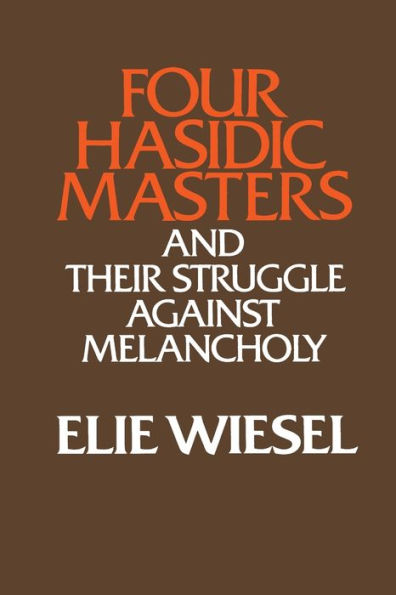As always, Wiesel’s characters are infused with the breath of life: these extraordinary men are fully human, whether reeling in spiritual ecstasy or pondering their existential melancholy, the loneliness that accompanies vision and greatness. . . . These tales make inspiring and fascinating reading for all.” —Library Journal (review of previous edition)
“Wiesel’s theme is that four great masters, Pinhas of Koretz, Barukh of Medzebozh, the Seer of Lublin, and Naphtali of Ropshitz, were each a source of inspiration for others, communicating joy and fervour, but were themselves locked in struggles with melancholy and often fear. Through their legends and writings, Wiesel sees them fighting off their sorrow with exuberance, inundating their despair with an urgent commitment. Sometimes they fail. It is a delicate and worthwhile collection.” —A. Podet, European Judaism (review of previous edition)**
“Drawing extensively on Jewish legend and tradition, Wiesel creates literature of lasting power and moral authority. . . . As Wiesel portrays each of these teachers, his book becomes a classic Hasidic tale about friendship and hope against overwhelming odds.” —John K. Roth, Thought: A Review of Culture and Idea (review of previous edition)
“The delightful work, in the by now well-known manner of Elie Wiesel, continues his recounting of Hasidic tales begun in Souls on Fire. . . . On their own terms they are splendid.” —Choice (review of a previous edition)
“For Wiesel, Hasidism is not a theology or a philosophy. It is not an abstract system of ideas or a conception of the Deity. It is a friendship and a concern for people and for God. Hasidism is the opposite of solitude. It is a sense of being bound up together with all other human beings in their joy and in their distress and of being bound up with God in his joy and in his distress.” ―Commonweal (review of a previous edition)
"Another beautifully written and prepared work by one of the fine writers of our time." ―The Jewish Post and Opinion (review of a previous edition)
“There is more help for the troubled in these stories than in many books programmed for self-help." ―Christian Century (review of a previous edition)
“Elie Wiesel is one of the great writers of this generation.” ―New York Times Book Review (review of a previous edition)
“Wiesel brings a journalist’s optimism to his studies of the Hasidic saints who set Eastern European Jewry alight in the 18th century with the faith that brought it through the last, worst centuries of persecution.” ―The Boston Globe (review of a previous edition)



